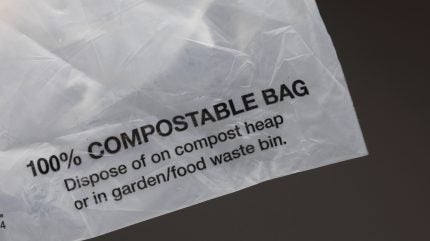
The packaging industry is undergoing a transformative shift, driven by the need for sustainability, enhanced functionality, and consumer engagement.
Advanced materials are at the forefront of this evolution, offering innovative solutions that address environmental concerns while meeting modern demands.

Discover B2B Marketing That Performs
Combine business intelligence and editorial excellence to reach engaged professionals across 36 leading media platforms.
Biodegradable and bio-based materials: paving the way for eco-friendly packaging
Traditional plastic packaging has long been a contributor to environmental pollution. In response, the industry is increasingly adopting biodegradable and bio-based materials derived from renewable resources.
Bioplastics, for instance, are produced from plant-based sources such as corn starch, sugarcane, and seaweed. These materials not only reduce reliance on fossil fuels but also offer improved end-of-life options, including compostability and recyclability.
Mycelium-based packaging, developed from the root structure of fungi, is another promising alternative. Companies like Ecovative Design have pioneered the use of mycelium composites, which are grown using agricultural waste and can decompose naturally without leaving harmful residues.
Such innovations align with the principles of a circular economy, aiming to minimise waste and promote resource efficiency.

US Tariffs are shifting - will you react or anticipate?
Don’t let policy changes catch you off guard. Stay proactive with real-time data and expert analysis.
By GlobalDataEdible packaging is also gaining traction, particularly in the food industry. Researchers have developed packaging materials from natural ingredients like seaweed and rice, which can be consumed along with the product or composted, thereby eliminating packaging waste altogether.
Smart packaging: integrating technology for enhanced functionality
The integration of technology into packaging materials has led to the emergence of smart packaging solutions.
These advanced systems incorporate sensors, indicators, and communication technologies to provide real-time information about the product’s condition, authenticity, and usage.
For example, temperature-sensitive packaging can monitor and display the temperature history of perishable goods, ensuring that products like food and pharmaceuticals remain within safe limits during transportation and storage.
Similarly, time-temperature indicators can alert consumers to potential spoilage, enhancing safety and reducing food waste.
Near Field Communication (NFC) and QR codes embedded in packaging enable consumers to access detailed product information, verify authenticity, and engage with interactive content. This not only enhances the user experience but also allows brands to build trust and loyalty.
Furthermore, the development of active packaging materials that can interact with the product environment is a significant advancement. Such materials can release preservatives or absorb oxygen and moisture, thereby extending shelf life and maintaining product quality.
Regulatory frameworks and the push for sustainable packaging solutions
Governments and regulatory bodies worldwide are implementing policies to encourage the adoption of sustainable packaging materials.
In the European Union, the Packaging and Packaging Waste Regulation aims to reduce environmental impact by promoting recyclable and reusable packaging solutions.
These regulations are driving innovation and compelling companies to invest in advanced materials that meet stringent environmental standards.
Similarly, in the United States, legislation like the Packaging Reduction and Recycling Infrastructure Act mandates reductions in packaging waste and the use of recyclable materials.
Such policies not only address environmental concerns but also create opportunities for businesses to develop and adopt innovative packaging technologies.
The global shift towards sustainable packaging is further supported by consumer demand for environmentally responsible products. Brands that embrace advanced materials and transparent practices are likely to gain a competitive edge in the evolving market landscape.
In conclusion, the integration of advanced materials in packaging is a critical step towards achieving sustainability, enhancing product functionality, and meeting regulatory requirements.
As technology continues to evolve, the packaging industry must adapt by embracing innovative materials and practices that align with environmental goals and consumer expectations.



